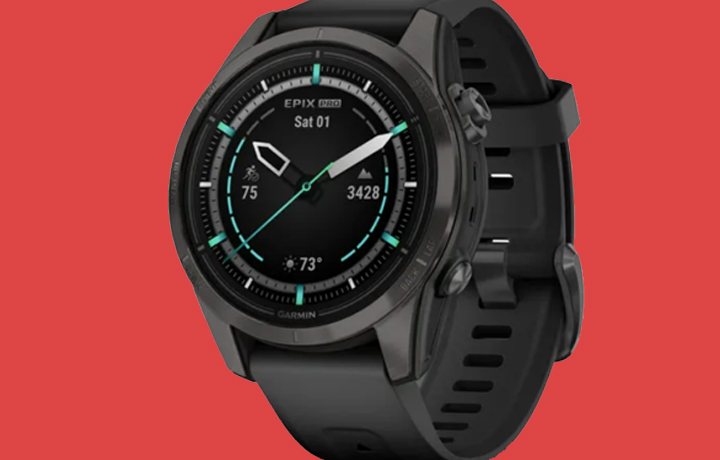Garmin Epix Pro Review
Recording And Outdoor Activities: Regarding battery life during outdoor activities, the advertised numbers for the 47-millimeter Epix Pro are similar to those of the Epix Gen 2. For reference, here are the battery life figures for all the models. However, let’s talk about how these claims held up in real-life scenarios.
During a hike where I used the always-on display, wrist-based heart rate monitoring, and locked the watch into multi-band mode for consistent battery performance, the Epix Pro exceeded its 30-hour always-on claim.
It should be noted that I interacted with the watch frequently and had it on the map page for most of the time, which typically requires more power. These results suggest that Garmin’s battery life claims are conservative.
Regarding battery life in the Sat IQ or Auto Select modes, it can vary depending on your conditions since the watch automatically switches between satellite modes. During a ride where I used the Auto Select mode and paired the watch with an ANT+ power meter, the battery drained at a rate of about two percent per hour, translating to approximately 50 hours of battery life. It’s worth mentioning that this ride involved heavy tree cover and canyon walls, which may have triggered mode switches.
In terms of charging, the Epix Pro comes with a USB-C charging cable, with the other end featuring the standard Garmin charging port. Notably, the Epix Pro offers faster charging, allowing it to reach a full charge in about an hour, compared to the original Epix Gen 2, which takes around two hours.
Exciting Hardware Addition:
Now, let’s move on to another exciting hardware feature—the dedicated LED flashlight. This feature, previously available on the Fenix 7x and Enduro 2, is now present in all three sizes of the Epix Pro. Although a flashlight might not initially seem significant, it quickly becomes appreciated once you start using it. Personally, it has become one of my favorite features on a watch in a long time, and I find myself using it frequently.
Garmin has made some improvements to the flashlight. The lens is now clearer than the one found on the Fenix 7x, blending in more with the case for aesthetic purposes. However, this also results in a brighter flashlight, which Garmin decided to prioritize with the Epix Pro.
To quickly access the flashlight, you can perform a double press of the upper left-hand button. The flashlight settings allow you to adjust brightness and switch to a red color for nighttime use. Additionally, the flashlight includes a strobe feature with different patterns, including blitz, beacon, pulse, blinking, and custom modes.
Notably, you can even use the flashlight during activities. For example, during running, it can light up based on your cadence, enhancing your safety during early morning or late-night runs.
Improved Heart Rate Sensor:
Another significant upgrade is the inclusion of the 5th generation heart rate sensor. The sensor is larger than before, providing more surface area for sampling and sitting deeper into the skin for better contact. Additional LEDs along the outside enable the sensor to take more samples. During normal daily use, the two middle sensors are utilized, while the outer LEDs are activated during workouts for higher accuracy.
Redesigned Straps:
The goal of this sensor redesign was to improve accuracy during activities that traditionally pose challenges for wrist-based heart rate sensors, such as weight training, high-intensity interval training, and mountain biking. The accuracy of the sensor will be discussed in detail after covering all the new features.
On the hardware side, Garmin has slightly redesigned the straps for the Epix Pro. They now feature notches on the outside, allowing them to flex and conform better around the wrist.
Software Enhancement:
Moving to the software side, the Epix Pro introduces a new map overlay that displays shaded relief details on top of the topo map. This feature adds context beyond contour lines, allowing you to visualize your surroundings more effectively.
The shaded relief overlay is visible from the 800-foot zoom level and above, but not at the 500-foot zoom level and closer. Remarkably, even at the broadest zoom level, the shaded relief details remain visible.
Processing such data may cause slight delays, but it’s a valuable feature for understanding your location and finding suitable directions. If desired, you can disable the shaded relief to view a cleaner topo map with only contour lines. The next step is that there’s also a new map screen configuration. Read More…>>>
Check out the latest price of Epix Pro here.






